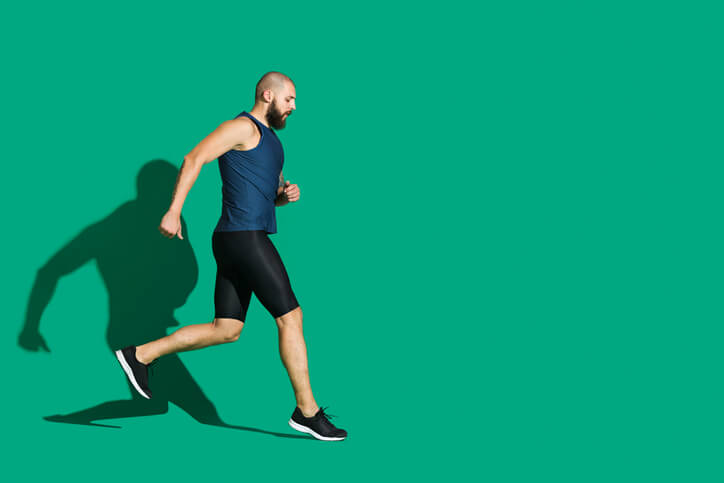14 Days Is All It Takes to See the Bad Effects of a Sedentary Lifestyle!
6 years ago | Physical exercise
By Joy Stephenson-Laws, JD, Founder
It’s crazy if you think about it. But many Americans sit more hours during the day than they sleep at night!
Reportedly, an investigation led by the Centers for Disease Control and Prevention (CDC) found that most Americans spend more than eight hours a day sitting down. In addition to this, many American adults get less than seven hours of sleep per night.
Yes, there is something very wrong with this picture!
We need to get good quality sleep and more of it in order to live our healthiest lives. Sitting down is definitely something we need to do less of.
I have previously blogged about the dangers of sitting down for too long, but I came across a recent study worth discussing. This study really puts into perspective the importance of being physically active and, quite frankly, just getting off your butt and moving!
The study participants included 18 women and 10 men (mean age of 32) who were habitually active and healthy. More specifically, this group of people took more than 10,000 steps per day and had body mass indexes (BMIs) that fell within the healthy range.
So the researchers of the study took a group of fit, active, healthy young people and had them all adopt a more sedentary lifestyle for just 14 days. They then had the participants return to their normal active lifestyles for 14 days.
The following assessments were taken of the participants at baseline (so right at the beginning of the study), 14 days after following a less active lifestyle and finally 14 days after they returned to their higher level of physical activity:
“Study participants reduced their step count by an average of around 10,000 steps/day measured in comparison to each individual's baseline activity, increasing their waking sedentary time by an average 103 minutes/day,” according to this report discussing the study.
Increasing your waking sedentary time by about an hour and 45 minutes per day may not seem like a big deal, however, the study revealed that after just two weeks (14 days) of less physical activity the participants’ health declined.
For example, cardiovascular function, which essentially is a measure of how well your heart does its job (how well it delivers oxygen, nutrients and hormones to your body’s cells) decreased by 1.8 percent after 14 days of less physical activity. On the other hand, the participants’ cardiovascular function returned to normal (around where it was at baseline assessment) 14 days after they resumed their normal activity routines.
"In parallel, total body fat, waist circumference, liver fat, insulin sensitivity and cardiorespiratory fitness were all adversely affected by 14 days step-reduction, but returned to comparable baseline levels following resumption of habitual activity."
"In young non-obese adults, short-term physical inactivity and increased sedentary behaviour led to decreased cardiorespiratory fitness and increasing waist circumference, liver fat deposition and insulin resistance, and led to a significant decline in endothelial function, a sign of developing cardiovascular disease."
The above results were seen in young, healthy non-obese adults. Imagine what the results of 14 days of inactivity would look like in people who are older or already have existing health issues such as diabetes and weight issues.
The good news is that if you get moving, it appears that you can improve your health in the same amount of time that you were inactive. So this all means that moving our bodies is an absolute must when it comes to what we should be doing as part of our proactive healthcare routine.
Be proactive. Get moving. Here are some tips:
- Find something you like. Working out does not have to be torturous! Hike with your dogs, play golf, run around with your kids or maybe take a dance class.
- Fit it in. Take a walk on your lunch break, take the stairs instead of the elevator, park further away from the door. These small changes can make big differences. And remember to stand up regularly and walk and stretch if you have a desk job.
- Fuel your body. In order to get the most out of your workouts, it is imperative that you give your body the nutrients it needs - both for getting through the workout and recovering afterwards. Read here to find out what vitamins and minerals you need.
- Know what’s right for you. Read here to learn how much you should be exercising for your age. And as always, seek the advice of a competent healthcare professional.
- Recover right. Treat yourself to some cryotherapy to help your muscles recover. Get a massage to reward yourself for all your hard work.
- Maintain nutritional balance. In order to be physically active to our fullest potential and to have good metabolic health, maintaining nutritional balance is key. Take routine nutrient tests in order to determine if you have any nutrient imbalances or deficiencies. If you do, a competent healthcare professional can help you make the necessary dietary changes and recommend quality supplements if necessary.
Enjoy your healthy life!
The pH professional health care team includes recognized experts from a variety of health care and related disciplines, including physicians, attorneys, nutritionists, nurses and certified fitness instructors. This team also includes the members of the pH Medical Advisory Board, which constantly monitors all pH programs, products and services. To learn more about the pH Medical Advisory Board, click here.







